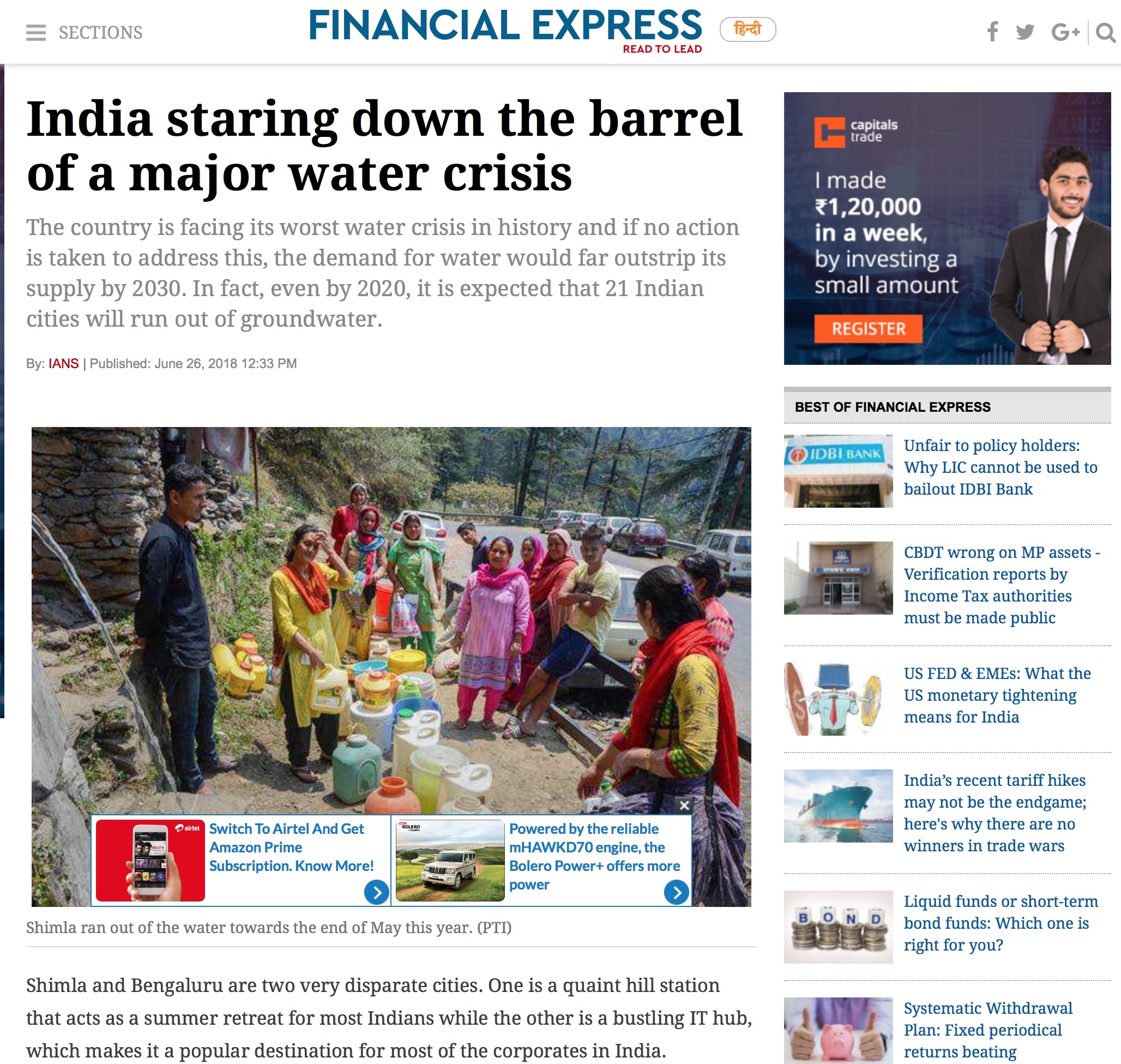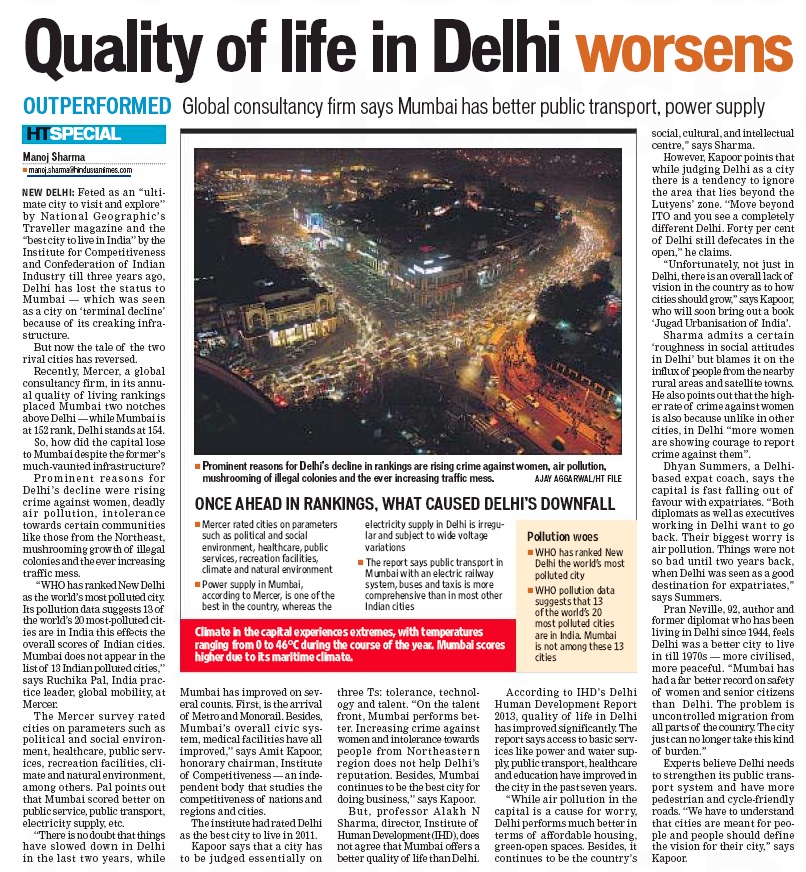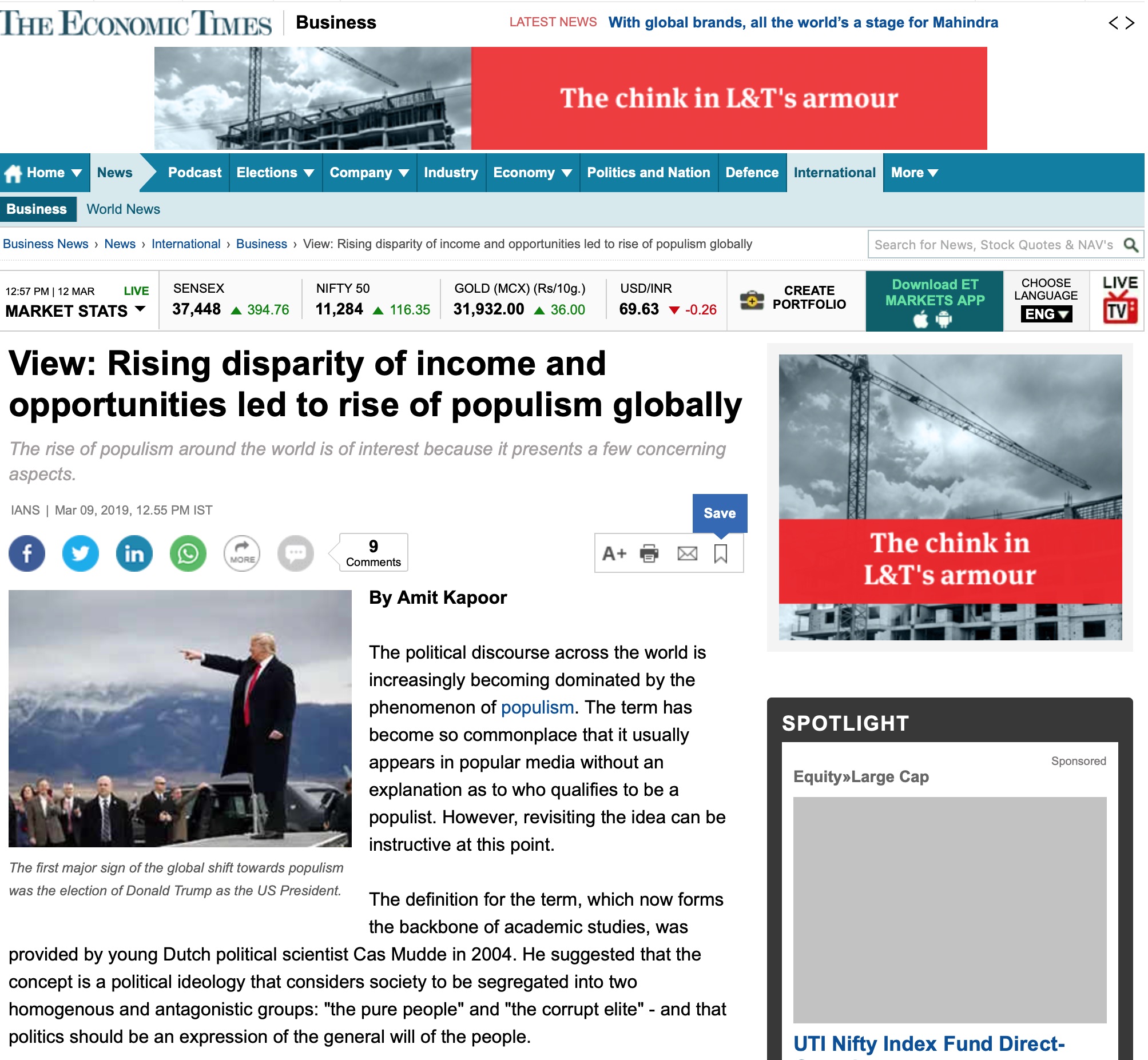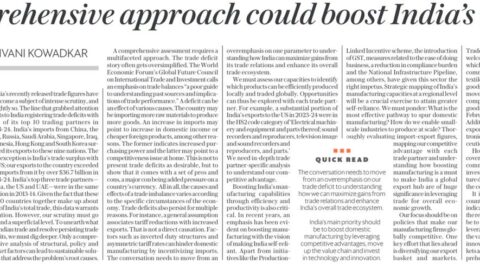Why India’s Success Matters to the World, Not Just to India
It is often said about the globalized age we live in that an event in any part of the world can potentially affect multiple regions, regardless of the geographical distance. It is the age of overlapping and interlinked global value chains, one where success or failures are not necessarily limited by national boundaries. In such a global landscape, the success of a country like India is significant not just for its own development ambitions. India attaining the goals set and overcoming challenges will have more than just a positive spillover effect. It will be a determining force with the power to shape global trends. India has certain features that make its success relevant to the global landscape.
Home to one-sixth of the global population, India’s colossal pool of human resources gets mentioned frequently in policy discussions. It is widely recognized that in harnessing the potential of this resource there are substantial gains to be reaped by both India and the world at large. India is expected to add another 183 million people to the working age group of 15-64 years between 2020-50. Additionally, India’s working-age population is expected to grow to 18.6 percent of the global labour force by 2027. Transforming this reservoir of population into a resource equipped holistically in terms of education, skills, and health, would create a crucial source of labour force for the world as well. Furthermore, the labour force would unleash potential demand for industries to cater to. Enabling a population unleashes untapped demand forces. According to the World Economic Forum, by 2030, India is projected to be led by the middle class. In 2030, around 80% of households will be middle-income from about 50% today, with the middle class expected to drive 75% of consumer spending in 2030. This segment would generate exponential demand, driving up India’s consumption expenditure, and serving as a lucrative market. If India succeeds in leveraging its demographic dividend, the consumption growth from this expanded middle-class segment with an addition of nearly 140 million new households, will be supported by a more educated and better-employed youth. Industries worldwide will have the opportunity to serve this market better, and harness the young and able population.
In recent years, India has come to occupy a position of significance in the world economy. Currently, India is the sixth-largest economy, behind the U.S., China, Japan, Germany, and the U.K. Despite facing major challenges in the form of poverty, inequitable distribution of resources, education, and healthcare-related inadequacies, among others, India accounts for about 15% of global growth as per IMF estimates. Additionally, the share of India in world GDP at current prices (PPP) increased from 4% to 6.8% from 2000 to 2020. This urges one to think about the possibility of global growth when India attains a more uniform spread of prosperity within the country across different classes, communities, and regions. Overcoming the hurdles India is posed with will unleash its true potential and help the nation contribute to global growth in a far greater capacity.
India, by reaching the highest annual FDI inflow of USD 83.57 billion in FY21-22, established the fact that it is rapidly emerging as a preferred investment destination. In the last 20 years, FDI inflows have increased 20-fold. Concerted efforts are underway in the direction of making India an even more attractive and stable investment ground. FDI inflows strengthen production, facilitate the transfer of technology from investors, and in turn, enable India to gain a competitive advantage in different sectors.
The country’s position in the world was further reinforced because of its vital role in supplying vaccines to the world during the COVID-19 crisis. India supplied over 235 million total supplies of COVID-19 vaccines to 98 countries. Improving the scientific research and manufacturing ecosystem would further enhance India’s capacity to extend the benefits of its domestic scientific research system. Going beyond national interest showcases an ethos of solidarity with the world. The nation has emerged as a crucial lynchpin in an evolving geo-political landscape of a multipolar world, especially as an influential player from the Asian bloc. In the climate change discourse, in particular, the way India chooses to address both its economic growth challenges and its sustainability goals can pave the way for a host of developing nations who find themselves in a similar situation.
In the coming decades, India’s strategy will in no small part have global ramifications. India’s long-term economic success depends on its capacity to develop a coherent national value proposition, identifying specific opportunities and business environment qualities that it provides. A nation’s economic clout depends on a range of non-economic factors as well. India’s success has to be seen not just in terms of its economic prowess. The definition of India’s success has to factor in its ability to progress socially, produce sustainably and distribute resources and value created more equitably. The Competitiveness paradigm, by capturing all of the factors mentioned, broadens the very idea of success.
The article was published with Mint on September 25, 2022.
























